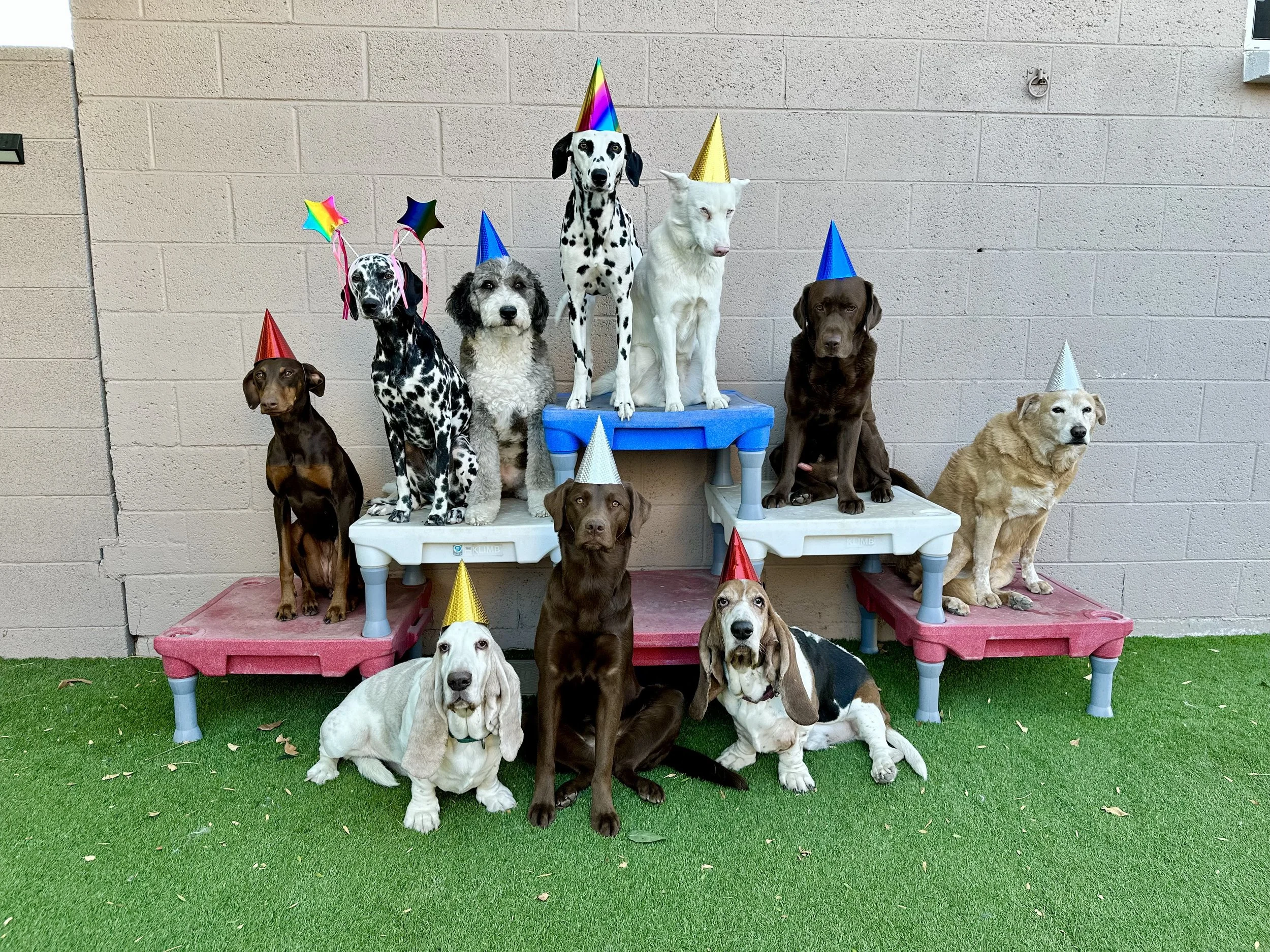The Power of Place Training: Why Every Dog Needs It
Calm, focused, and confident—these dogs are mastering place training like pros!
Place training is a structured exercise that teaches your dog to go to a designated spot—such as a dog bed, mat, or raised cot—and stay there until released. Unlike basic “sit” or “stay” commands, place training teaches a deeper level of patience, impulse control, and environmental stability.
"Place training is one of my go-to training tools because it helps dogs learn to self-regulate. It teaches them patience, confidence, and the ability to relax no matter what’s going on around them," explaind Denise Bozenski, owner and head trainer of Fetch This Canine.
This skill is useful in everyday life, whether you want your dog to relax while guests visit, remain calm at the vet’s office, or settle down in public spaces like outdoor cafés.
Learn more about Denise HERE!
Why Every Dog Needs Place Training
Promotes Calmness and Impulse Control
A dog that understands “place” is a dog that can handle distractions without overreacting. Instead of jumping on guests, barking at delivery drivers, or begging at the dinner table, a well-trained dog will go to their designated spot and wait. "A dog that masters place training learns how to relax, even in high-energy environments. It helps prevent reactive behaviors and creates a well-mannered companion," says Denise.
Builds Confidence and Reduces Anxiety
For nervous, reactive, or insecure dogs, place training provides a reliable routine. Dogs thrive on predictability, and having a specific “home base” helps them feel secure.
Some dogs, especially rescues or those with past trauma, struggle with overstimulation. A dedicated place to retreat to allows them to decompress and observe their surroundings without fear.
Enhances Obedience and Control in Any Environment
Once your dog learns place training at home, the command becomes useful in other settings. You can use “place” at the vet’s office, at a park, or even in a hotel while traveling. This creates a universal obedience skill that applies everywhere, not just at home.
Situations where place training is useful:
- At home: Helps keep your dog out from underfoot while cooking or cleaning.
- At the vet or groomer: Teaches patience in a stressful environment.
- In public places: Great for dogs accompanying owners to restaurants or dog-friendly shops.
Creates a Safe Space for Your Dog
Dogs benefit from having a designated spot where they can relax. Just like humans enjoy having a favorite chair or a cozy corner, dogs appreciate having a specific place they can retreat to when they need downtime.
This is especially beneficial in multi-dog households, during busy events, or when introducing a new pet to the home.
Makes Everyday Life Easier
A well-trained “place” command simplifies life for both dogs and owners. Whether you’re answering the door, sitting down for a meal, or entertaining guests, your dog will know exactly where to go and what’s expected. Denise says, "The beauty of place training is that it takes the guesswork out of obedience. Your dog knows where to be, and you can focus on what you need to do without constant interruptions."
Check out our blog, Balanced Dog Training: What It Is, Why It Works & How It Aligns with Holistic Training, for more information on how balanced training can help your dog!
How to Teach Place Training
Step 1: Choose a Designated Spot
Select a specific place for your dog, such as a cot, mat, or bed. Ideally, this should be a slightly elevated surface or something visually distinct from the floor.
Step 2: Lure Your Dog Onto the Place
Use a leash, hand signals, or treats to guide your dog onto the designated area. As soon as they step onto it, mark the behavior with a reward and praise.
Step 3: Introduce the Stay and Release Commands
Once your dog is comfortable standing on their place, ask them to sit or lie down. Reward calm behavior and gradually increase the time they remain there before releasing them.
Step 4: Add Distance and Distractions
As your dog improves, start moving away while they stay in place. Introduce mild distractions, like knocking on a door or tossing a toy nearby, to reinforce impulse control.
Step 5: Generalize to Different Environments
Once your dog reliably stays in place at home, practice in different locations. This could include the backyard, a friend’s house, or a pet-friendly café.
For more information on practical commands your dog should know, check out our blog, The First 5 Commands Every Dog Should Learn for a Well-Behaved Companion.
Common Mistakes in Place Training
Releasing the Dog Too Soon
Dogs need to learn patience, so don’t release them the second they step onto the place. Work on extending their time in place gradually.
Not Practicing with Distractions
If your dog only stays in place when it’s quiet, they might not listen in a real-world setting. Be sure to add different distractions as they progress.
Inconsistency in Commands
Always use the same word for the release cue (such as “Okay” or “Free”). If you mix commands, your dog might get confused.
FAQs
How long should my dog stay in place?
Start with a few seconds and gradually build up to minutes. The goal is for your dog to stay until released, no matter how long that takes.
What if my dog keeps breaking the command?
Stay consistent. If your dog steps off their place before being released, calmly guide them back and reward success.
Can I use place training for high-energy dogs?
Yes! It’s one of the best ways to teach an energetic dog how to settle down and regulate their behavior.
Ready to Transform Your Dog’s Behavior?
Place training is a game-changer for obedience and behavior management. If you need help implementing it, contact Fetch This Canine today! Get started HERE!


